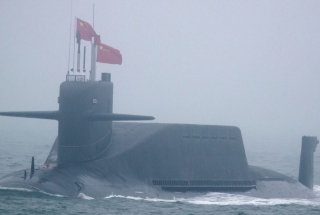The Future of the Undersea Deterrent: A Global Survey

Publisher:
ANU National Security College
Year:
2020
Month:
February
Edited by: Rory Medcalf, Katherine Mansted, Stephan Frühling and James Goldrick
Download the full report
Amid rapid geopolitical change at the start of the 2020s, nuclear weapons manifest grim continuity with the previous century. Especially persistent is a capability that has existed since the 1960s: the deployment of nuclear weapons on submarines. The ungainly acronym SSBN represents nuclear-powered ballistic missile submarines: the most destructive armaments carried on a supposedly undetectable, and thus invulnerable, platform.
In the new nuclear age, many nations are investing in undersea nuclear deterrence. In the Indo-Pacific region (the centre of strategic contestation), four major powers – the United States, China, India, and Russia – have SSBN programs, while Pakistan and North Korea are pursuing more rudimentary forms of submarine-launched nuclear firepower. This complex maritime-nuclear dynamic brings deterrence but also great risk. Yet the intersection of undersea nuclear forces, anti-submarine warfare (ASW), geostrategic competition, geography, and technological change is not well understood. This has a major bearing on peace and security, in terms both of crisis stability and arms race stability
To illuminate these critical issues, the National Security College at The Australian National University, with the support of the Carnegie Corporation of New York, is conducting an international research project on strategic stability in the Indo-Pacific. The project’s focus is on new technologies and risks relating to undersea warfare and nuclear deterrence over a twenty year timeframe. The present volume is the project’s second publication, bringing together the insights of leading international scholars and next-generation experts to produce a comprehensive and authoritative reference. The edited volume examines the interplay of strategic issues, including nuclear strategy and deterrence; maritime operational issues, including ASW; and technology issues, including new and disruptive technologies and potential game-changers in relation to deterrence.
This volume represents a significant contribution to the field of nuclear deterrence and strategic stability. Its 22 authors span seven countries, and reflect world-leading academic and operational experience across nuclear strategy, deterrence and arms control, maritime operations, and the trajectory of emerging technologies.
This volume will help to advance critical conversations about undersea nuclear deterrence in the Indo-Pacific – a region of intensifying complexity, and uncertainty – and is of value to the policymakers and governments who must chart a course through these dynamics.
Support for this publication was provided by a grant from Carnegie Corporation of New York.
Edited Volume Contents
Part 1: Strategic Context
1- Undersea Deterrence and Strategic Competition in the Indo-Pacific
Rory Medcalf
2- Maritime and Naval Power in the Indo-Pacific
James Goldrick
3- SSBN, Nuclear Strategy and Strategic Stability
Stephan Frühling
4- Arms Control and Sea-Launched Nuclear Weapons
Hans M. Kristensen and Matt Korda
Part 2: Strategy, Policy and Capabilities
5- The SSBN and US Nuclear Strategy: The Future of the Maritime Deterrent
James J. Wirtz
6- The US Sea-Based Nuclear Deterrent in a New Era
Thomas G. Mahnken and Bryan Clark
7- The Role of Nuclear Weapons in China’s National Defence
Fiona S. Cunningham
8- The Future of China’s New SSBN Force
Adam Ni
9- The Role of Nuclear Forces in Russian Maritime Strategy
Michael Kofman
10- India’s Deterrence Posture and the Role of Nuclear Strategy
C. Raja Mohan
11- Atoms for Peace? India’s SSBN Fleet and Nuclear Deterrence
Sudarshan Shrikhande
12- Pakistan’s Nuclear Capabilities and Prospects for Sea-Based Deterrence
Sadia Tasleem
13- North Korean Nuclear Weapons: Posture, Submarines and Deterrence
Mike Cohen
14- France’s Deterrent Strategy and the Indo-Pacific
Bruno Tertrais
15- The Role of SSBNs in French Nuclear Posture and Maritime Strategy
Corentin Brustlein
16- UK Nuclear Deterrence: Security and Stability through SSBN CASD
John Gower
17- Japan’s Deterrence Posture and Approach to Anti-Submarine Warfare
Yoji Koda
Part 3: Technology Trends
18- Strategic Submarines and Strategic Stability: Looking Towards the 2030s
Norman Friedman
19- Prospects for Game-Changers in Detection Technology
Sebastian Brixey-Williams
20- Strategic Non-Nuclear Weapons, SSBNs, and the New Search for Strategic Stability
Benjamin Zala
Download the full report











